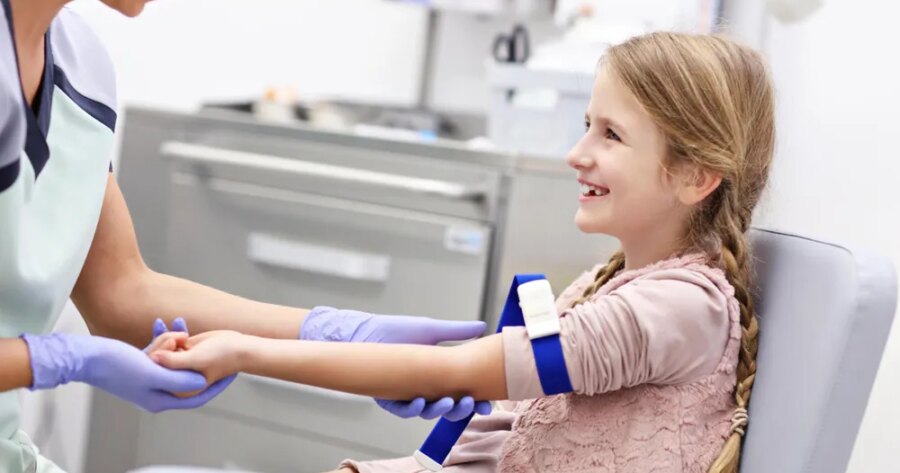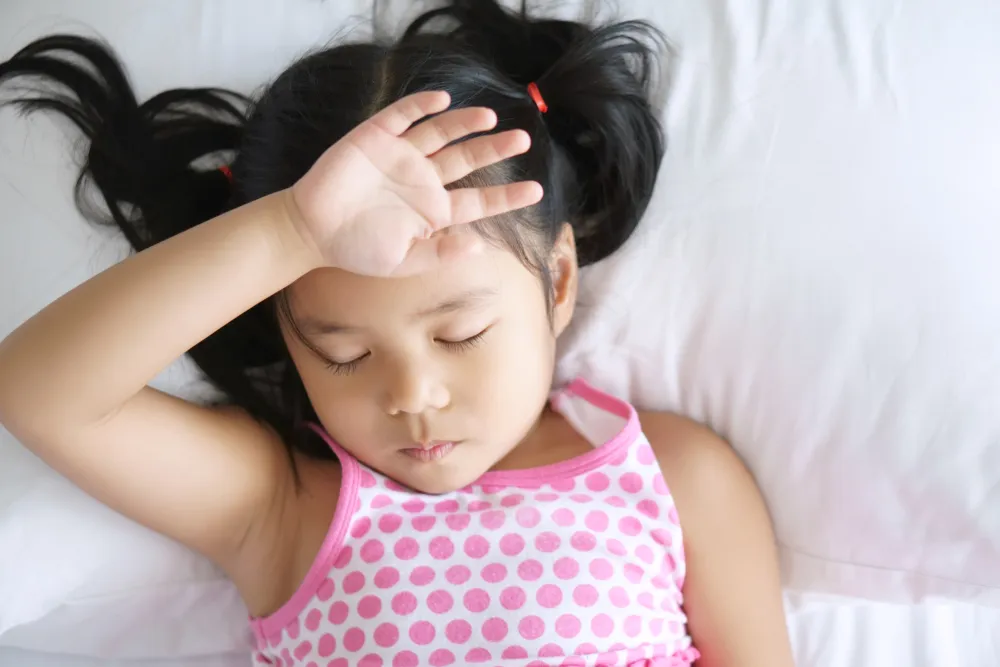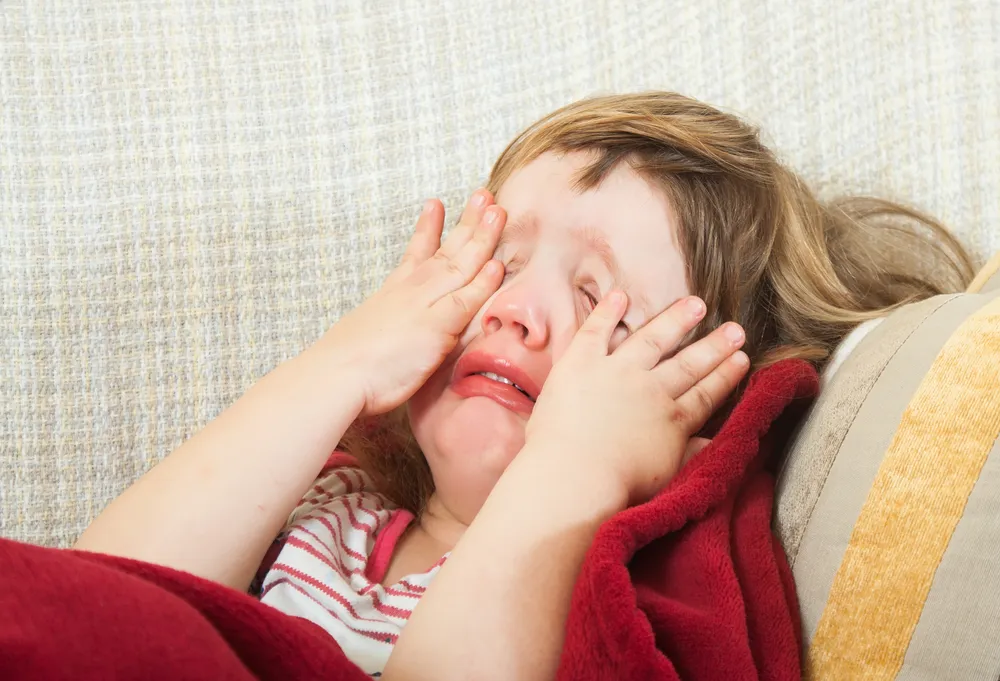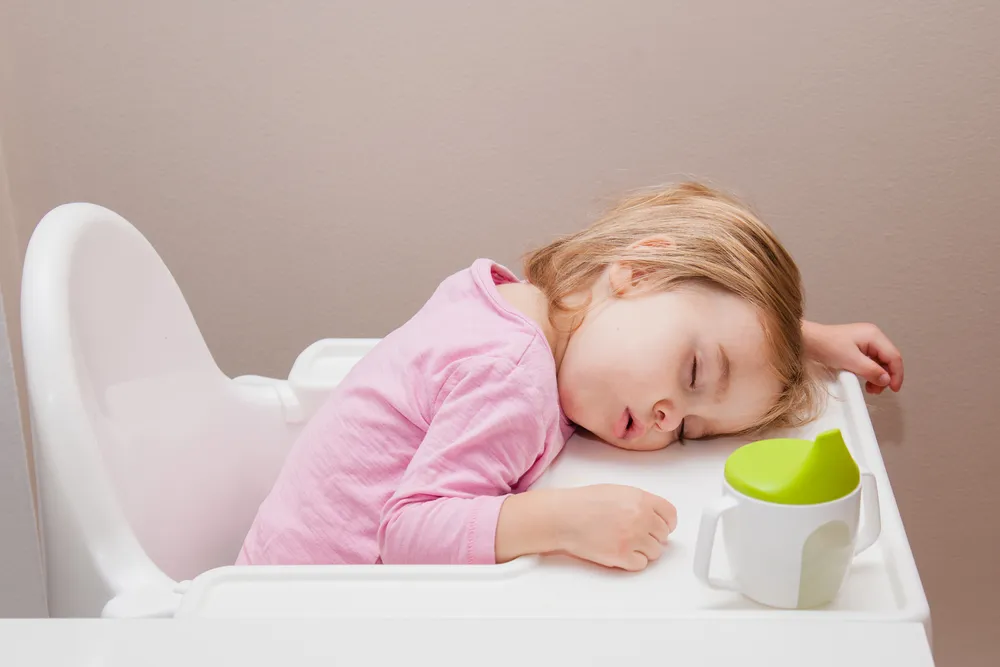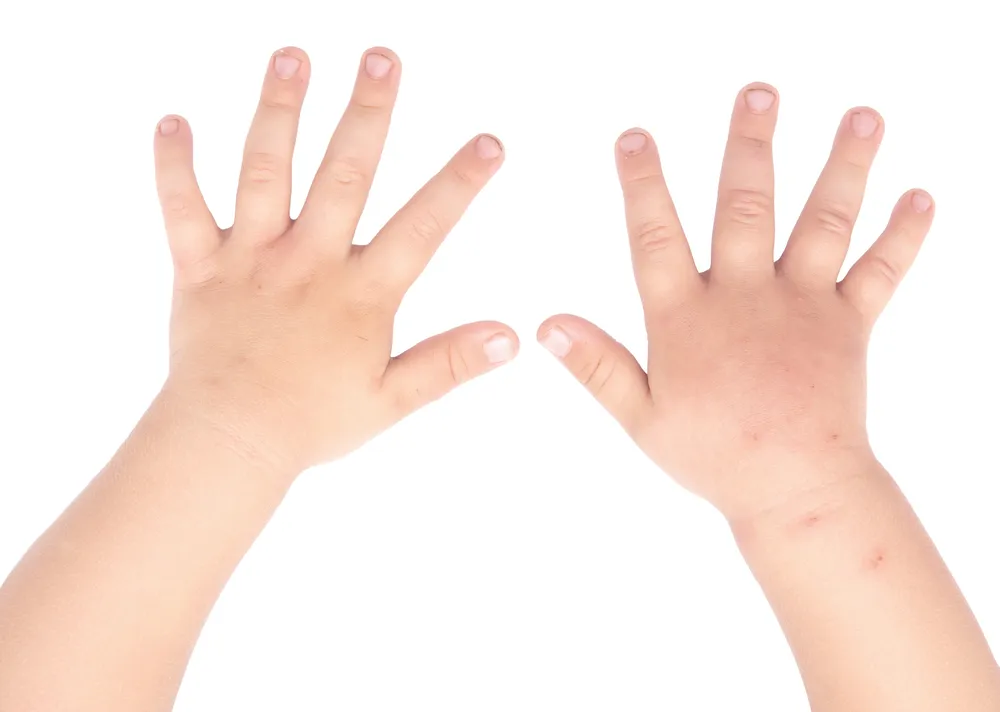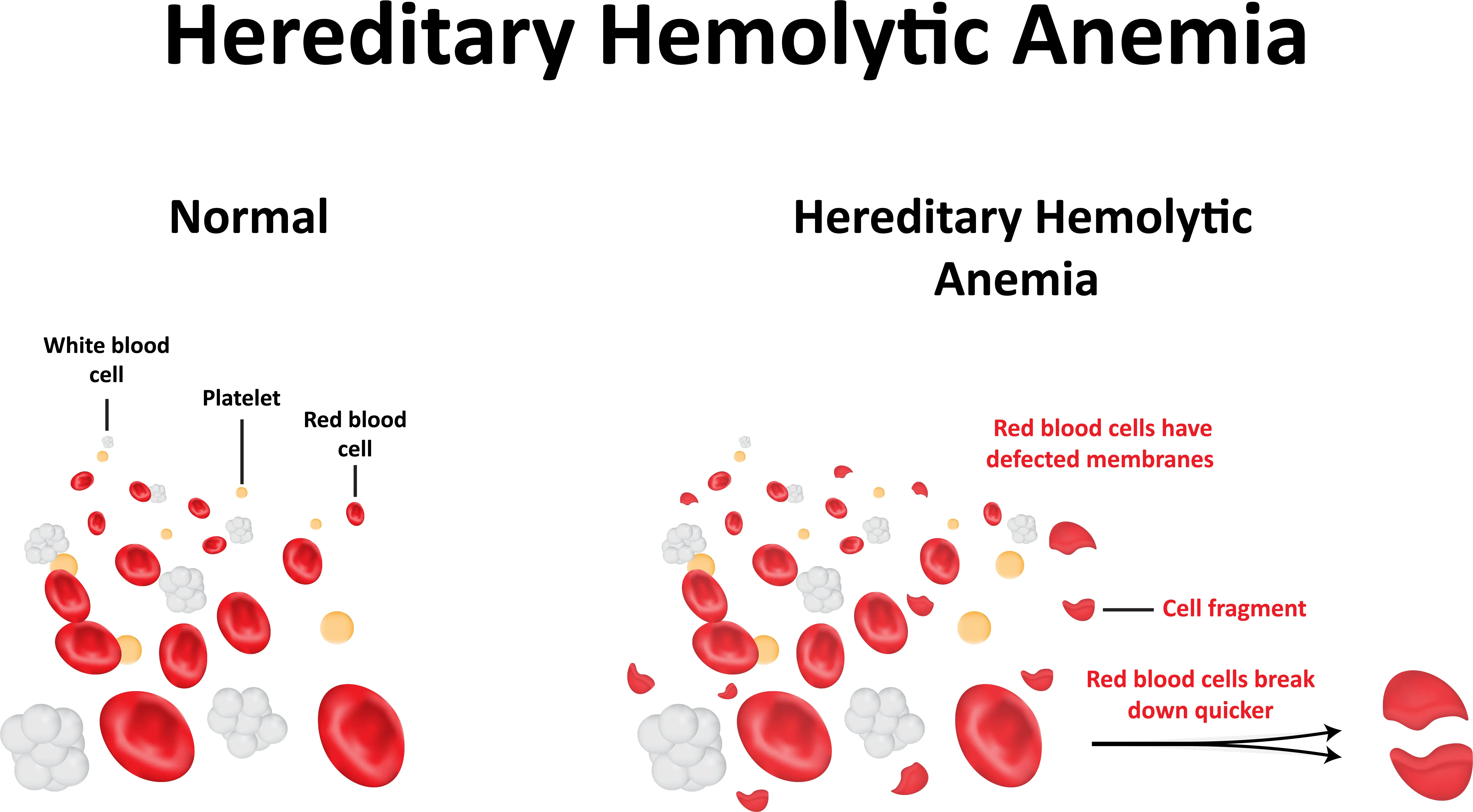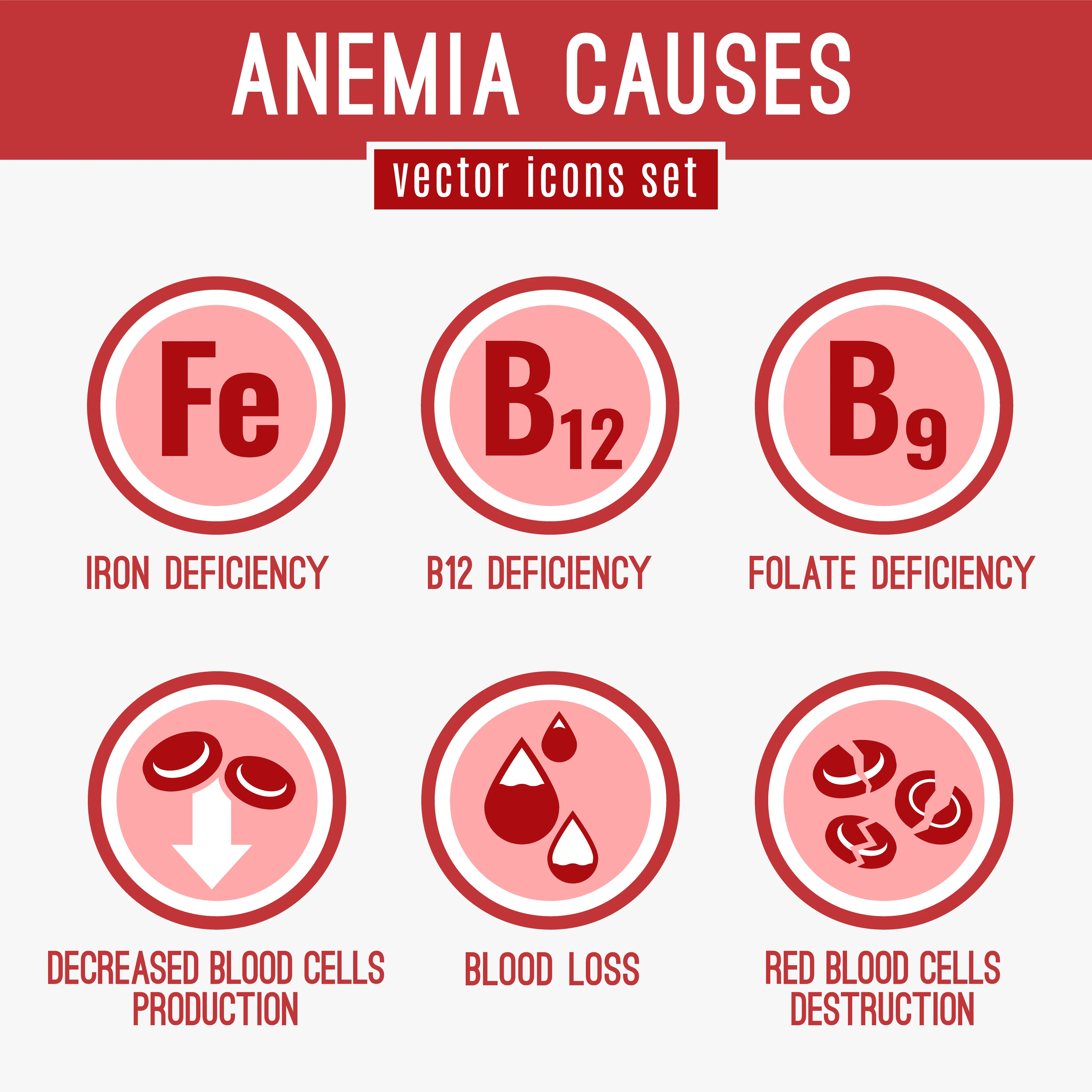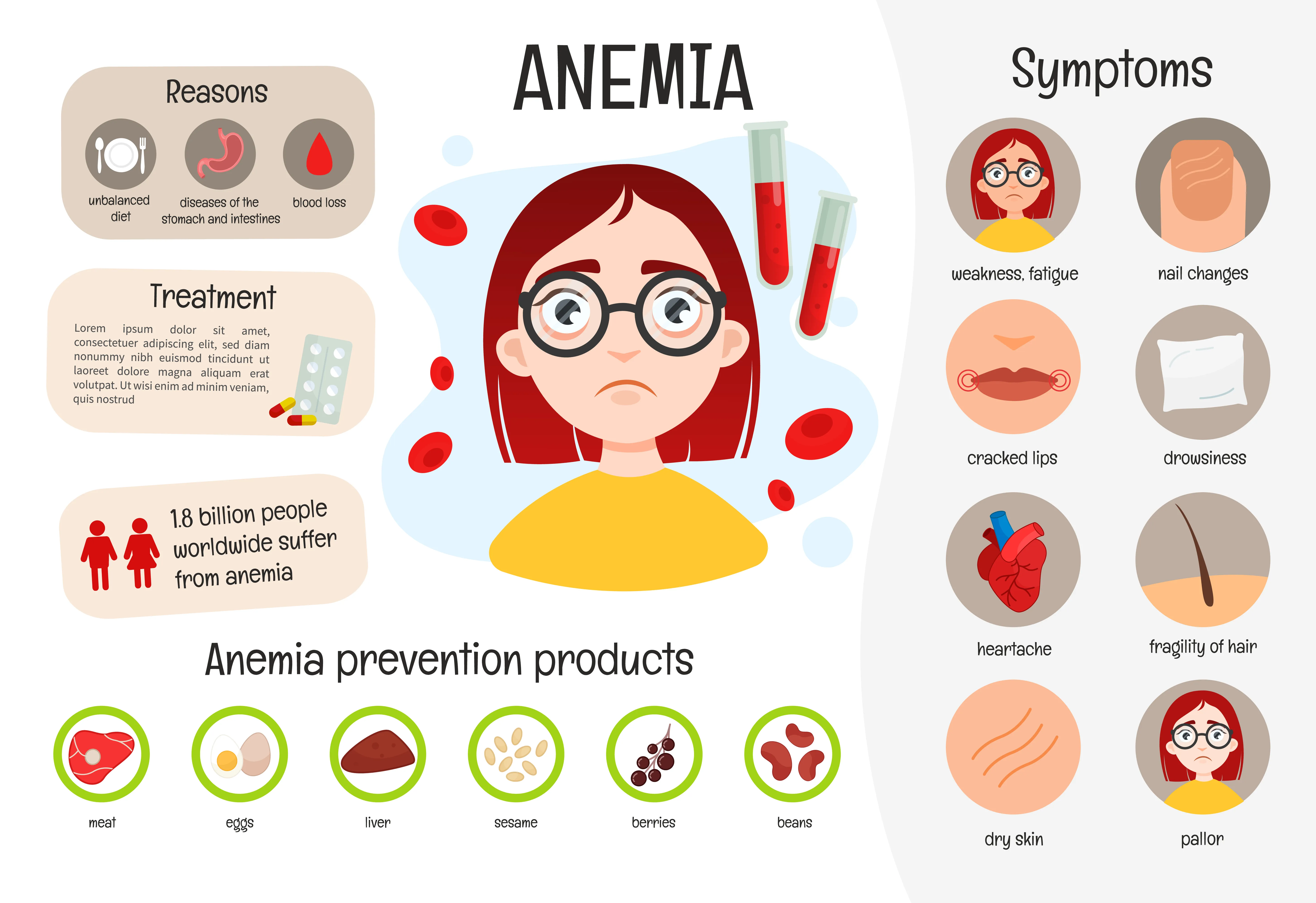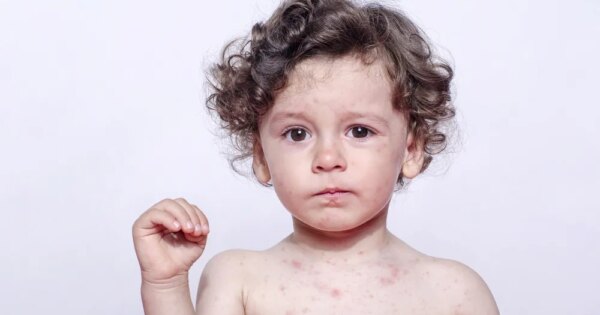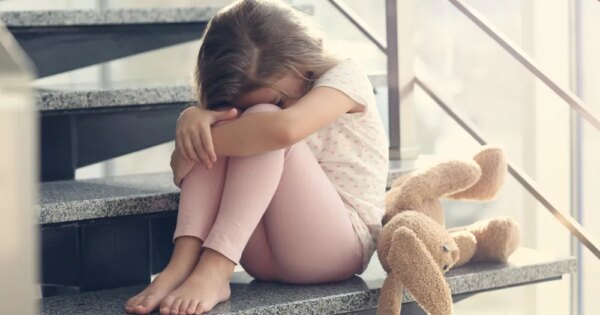Anemia is a condition that results from the number of red blood cells in your body dropping below the normal number for your age. This poses a problem because red blood cells carry a protein called hemoglobin, which in itself carries oxygen throughout your body. When there aren’t enough red blood cells carrying enough oxygen to different parts of your body, it affects the functionality of the body’s organs and muscles.
Children, particularly during their first year of life (as well as during adolescence), are especially prone to anemia due to rapid body development. This is one of the potential causes of the condition. Many of the symptoms of anemia overlap with regular, child-like behavior such as feeling cranky, tired, or weak which makes it especially difficult to notice. To help you quickly pick up on anemic symptoms, seek the right treatment, and avoid anemia for your child in the first place, read up on the most common anemic symptoms, causes, and treatment options…
Symptoms
Symptoms of anemia can look different from child to child and can also be dependant on the type of anemia your child has (the different types of anemia are explained in the section below), but here are some of the most common symptoms associated with anemia:
1. Pale Appearance
When there isn’t not enough red blood cells supplying oxygen to your vital organs, blood is then diverted away from the skin to supply extra help to your organs. This can leave your child’s skin, lips, and even their eyelids looking white and pale.
2. Moodiness, Dizziness, Lightheadedness, and Mild Weakness
It’s not exactly known why children with anemia experience these symptoms, but it’s thought to most likely be the result of not enough oxygen reaching their brains.
In some cases, these symptoms might more likely be caused by iron deficiency, one of the most common causes of anemia, as opposed to anemia itself.
3. Tiredness
Keep an eye out for any changes in your child’s energy or desire to nap. When there isn’t enough oxygen circulating around your body, your heart has to work harder to move more oxygen-rich blood around your body, which can make you feel tired. This is also why a faster-than-usual heartbeat can also be a symptom of anemia.
It’s also important to remember that tiredness can be a symptom of many different things and may not be the result of anemia.
4. Swollen Hands and Feet
In some cases, if your child experiences sudden pain throughout their body, it could be the result of sickle cell anemia. Sickle cell anemia occurs because the body makes red blood cells shaped like sickles (or a “C” shape) instead of the usual, smooth disc shapes. These C-shaped cells can then clump together, blocking blood flow to organs and muscles, resulting in swollen hands, feet, and organs like the spleen.
Other things to watch out for related to sickle cell and other hemolytic anemia are yellow skin and eyes, as well as dark, tea-colored pee.
5. Restless Leg Syndrome
Restless leg syndrome for the most part remains a mystery in the medical community, but it has at the very least been linked to an iron deficiency.
Before you chalk your child’s bouncing leg and inability to sit still up to boundless energy, see if they’re experiencing any other symptoms listed in this article. If so, your child could be experiencing an iron deficiency and, by extension, possibly anemia.
6. Eating of Non-Foods
Kids undoubtedly like to put things in their mouths. This itself isn’t necessarily cause for alarm. However, some children with anemia may begin to actually eat non-food things like ice, dirt, clay, and paper. This behavior is called “pica” and usually affects children with iron deficiencies. Fortunately, pica typically goes away with the help of iron supplementation.
Even if you don’t see your children actually eating any non-food items, watch out for signs when they go to the bathroom. Unsurprisingly, eating clay can cause your child to have serious constipation.
7. Impaired Development or Behavior
If you notice your child having unusual difficulty in school or in social settings, untreated anemia could possibly be a cause.
Even a low level of anemia can affect your child’s energy, focus, and ability to learn. Left untreated, iron deficiency anemia can even result in long-term, permanent impairment of development.
Causes
The different kinds of anemia are based on what causes them. Below are the different kinds of anemia and their associated causes:
8. Hemolytic Anemia
These are anemia caused by red blood cells breaking down too fast. There are two types of hemolytic anemia:
- Autoimmune Hemolytic Anemia: when the body’s immune system destroys its own red blood cells. This can result from exposure to certain toxins or chemicals (from medicine, for example), a complication of an infection, receiving a blood transfusion when the blood doesn’t match the individual’s blood type, an unborn baby’s blood type being different from that of their mother, and some types of cancer.
- Inherited Hemolytic Anemias: these include sickle cell disease, thalassemia, G6PD deficiency, and hereditary spherocytosis.
9. Anemia from Bleeding
This kind of anemia can result from bleeding from an injury, heavy menstrual periods, the gastrointestinal tract, or other medical problems.
10. Anemia from Insufficient Red Blood Cell Production
These are anemia caused by not having enough of certain nutrients, most often iron. There are three types of this anemia:
- Aplastic Anemia: when the body stops making red blood cells from an infection, illness, or other cause.
- Iron-Deficiency Anemia: when someone doesn’t have enough iron in their diet.
- Anemia B12 Deficiency: when someone doesn’t get enough B12 in the diet or the body can’t absorb the B12
11. Treatment Options
Treatment for anemia depends on the cause. Due to all of the different kinds of anemia, as well as all of the possible underlying conditions connected to the onset of anemia, a one-size-fits-all treatment option doesn’t exist.
Generally speaking, children with anemia might require:
- Medicines
- Changes in Their Diet
- Blood Transfusions
- Treatment of Another Underlying Disease
Fortunately, in most cases, a simple blood count can diagnose whether or not your child has anemia.
It’s also worth noting that some children with anemia don’t have any symptoms. This is why it can be helpful as a family to schedule regular blood tests.
12. Prevention
Of course, the best treatment for anemia is prevention. Certain kinds of anemia, like iron and B12-deficiency anemia, can be avoided by feeding your children a well-balanced diet filled with greens (for iron) and animal products (B12).
Nutritional anemia in children can also be avoided by following these rules from the American Academy of Pediatricians:
- Don’t give your baby cow’s milk until he or she is over 12 months old (due to potential blood loss in stool and decreased absorption of iron in their gut).
- Supplement breastfed babies with iron after they are 4 months old (consult with your doctor to see how much iron supplementation is required).
- Prioritize formula with added iron (if you’re formula feeding).
- Feed your children foods high in Vitamin C (helps the absorption of iron).
If your children have any dietary restrictions (can’t eat dairy products, for example), talk with your doctor about any nutritional supplements that may be required.
For more serious or inherited kinds of anemia, you may have to take your children to hematologists – doctors who specialize in anemia and other blood problems.
